For the first experiment, 4g of agar was boiled in 100 ml of distilled water, and 2 ml of universal liquid fertilizer was stirred in. After cooling, some dill seeds were placed on the agar surface and watered.
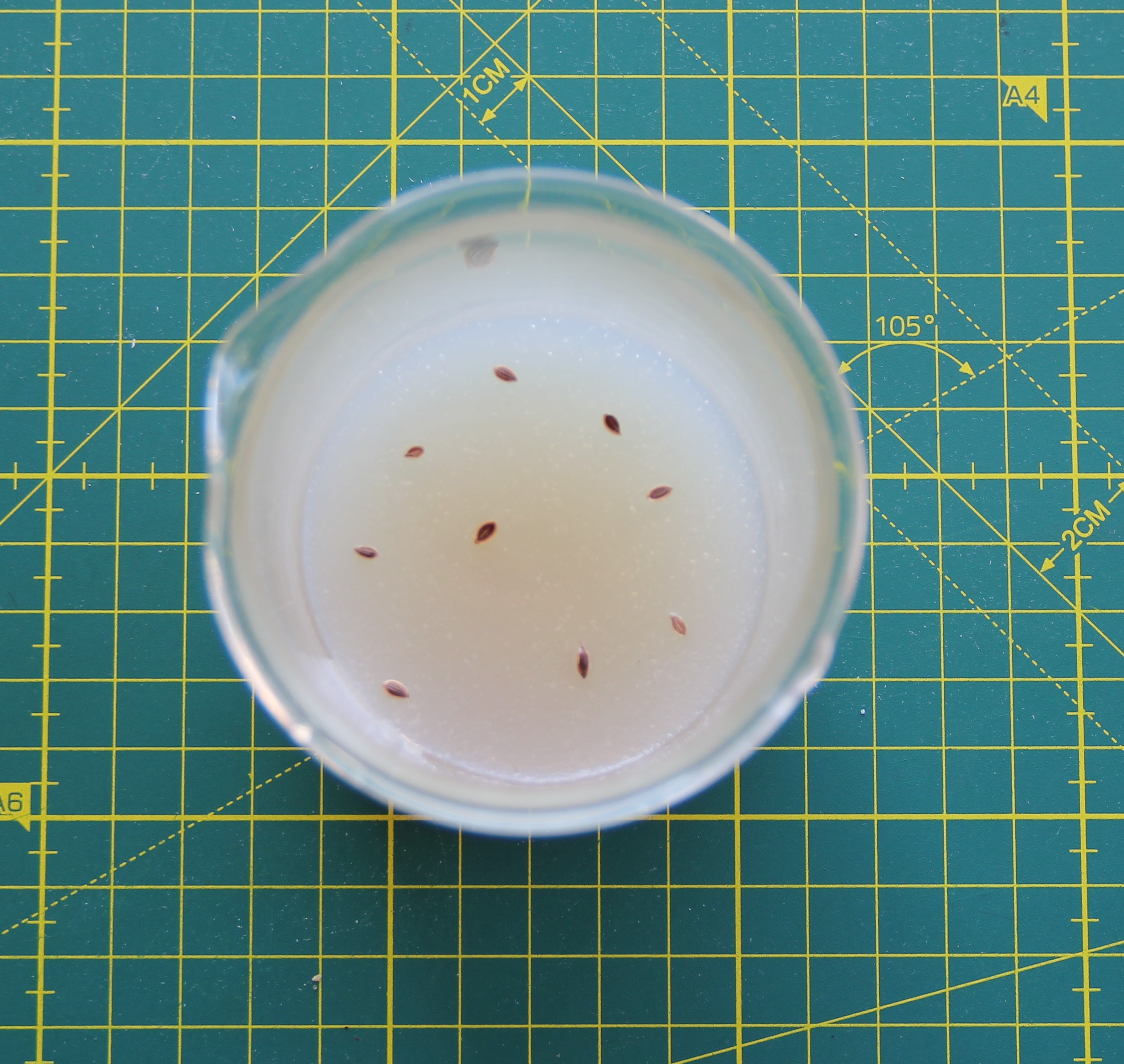
I then used a toothpick to make holes in the agar and pushed the seeds into the holes.
After a few days, the first mold cultures formed on the agar. I had not thought that this would happen so quickly. Some molds seem to be quite undemanding. I will let the experiment continue, as I am primarily interested in whether the seeds sprout and grow in the medium.
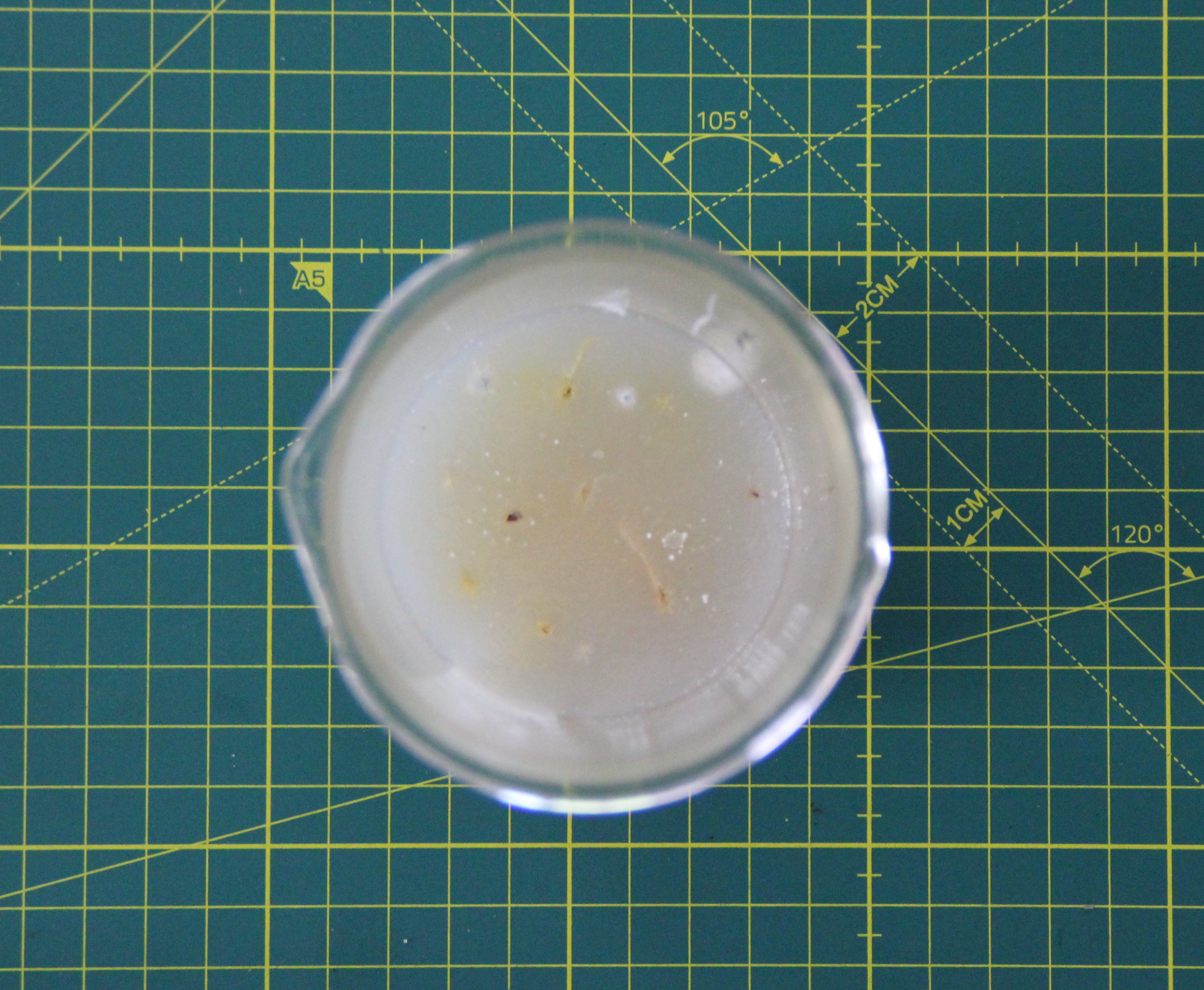
Another possibility would be sodium alginate, which gels when it comes into contact with calcium lactate and finds use primarily in so-called molar cuisine. Or simply a layer of soil, on top of it a layer of expanded clay pebbles, and finally a kind of retainer that retains the pebbles but is permeable to water and air.
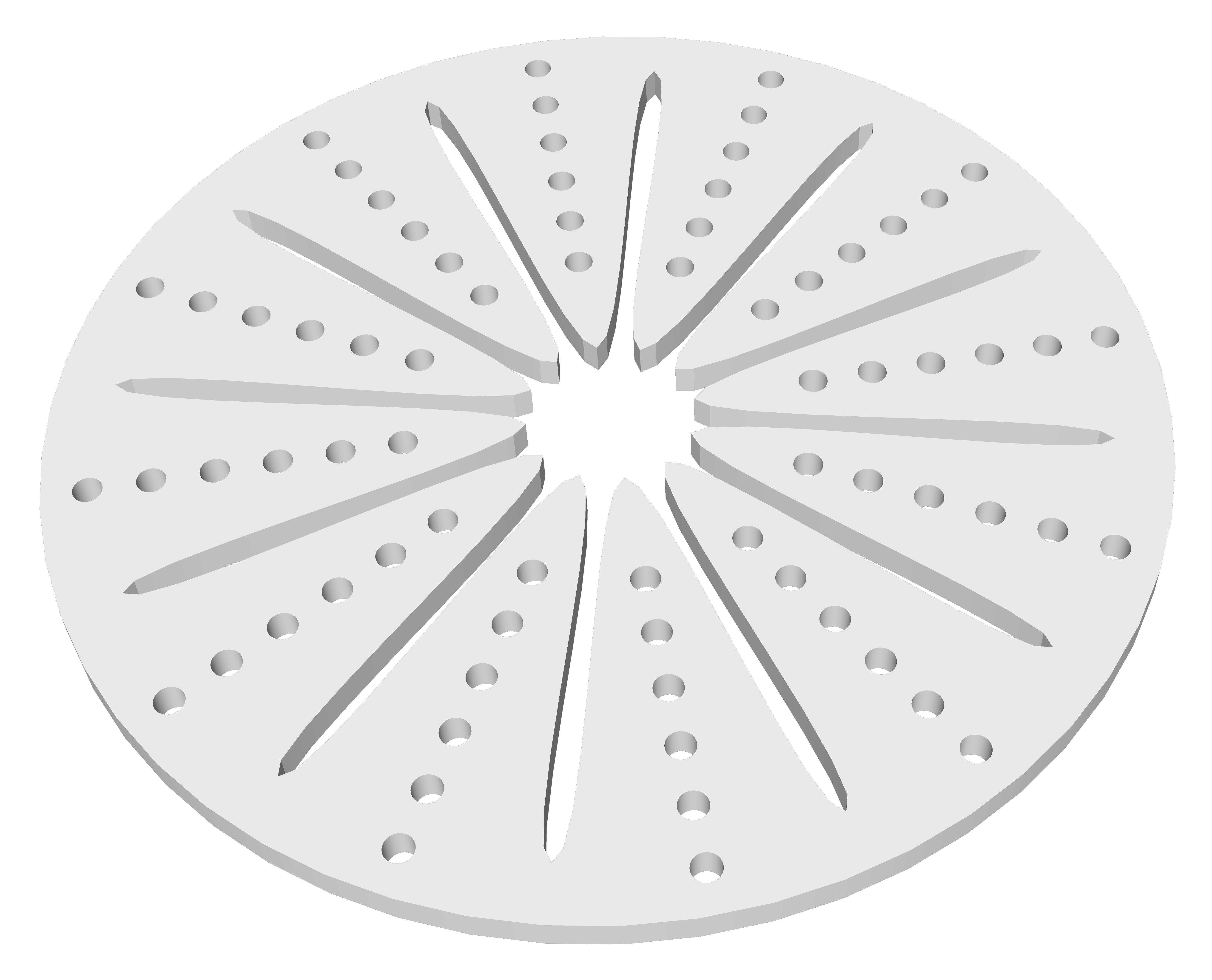
Since I am very interested in the theme, I started another series of experiments. The Petri dish on the left contains agar, and the one on the right contains sodium alginate, which I have set with concentrated calcium lactate solution. This time I use cress seeds (Lepidium satlyum) because they sprout much faster.
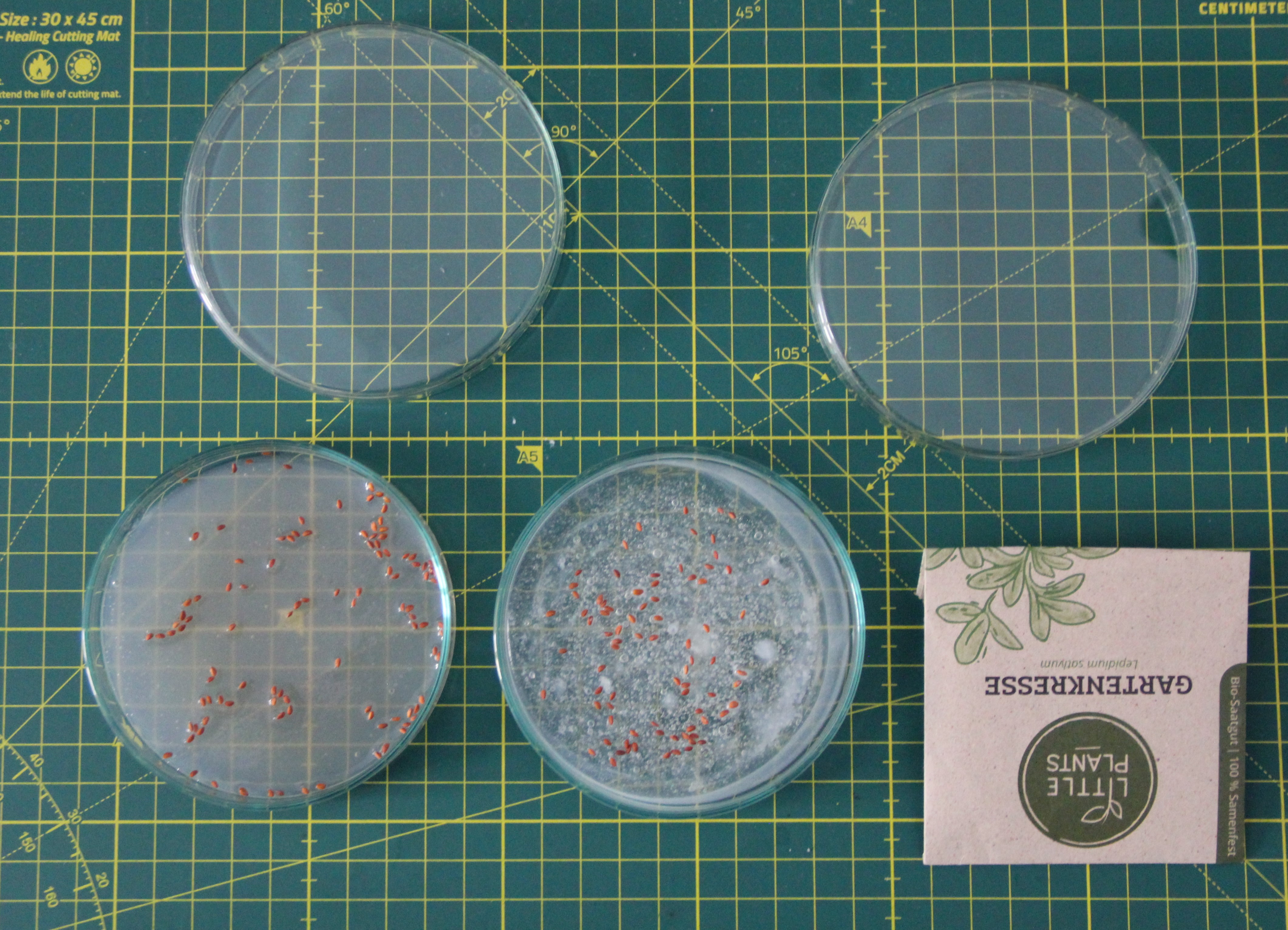
A few days later, the cress seeds sprouted. It seems that the cress grows faster on the sodium alginate substrate than on agar. I suspect it is because the roots penetrate the sodium alginate more easily than the agar. Both Petri dishes can be turned upside down and the plants adhere very well to the substrate.
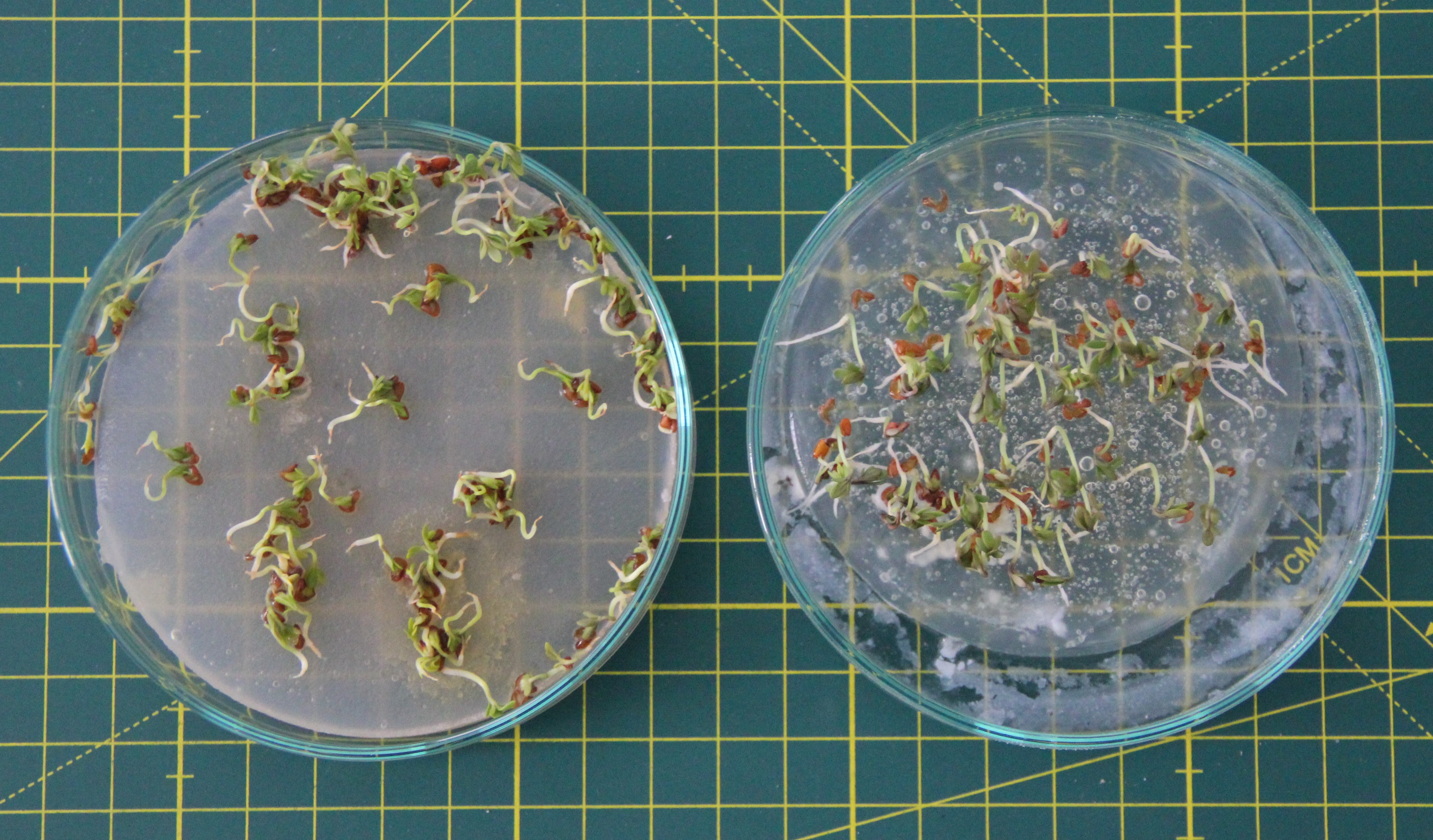
A few days later it is even more obvious:
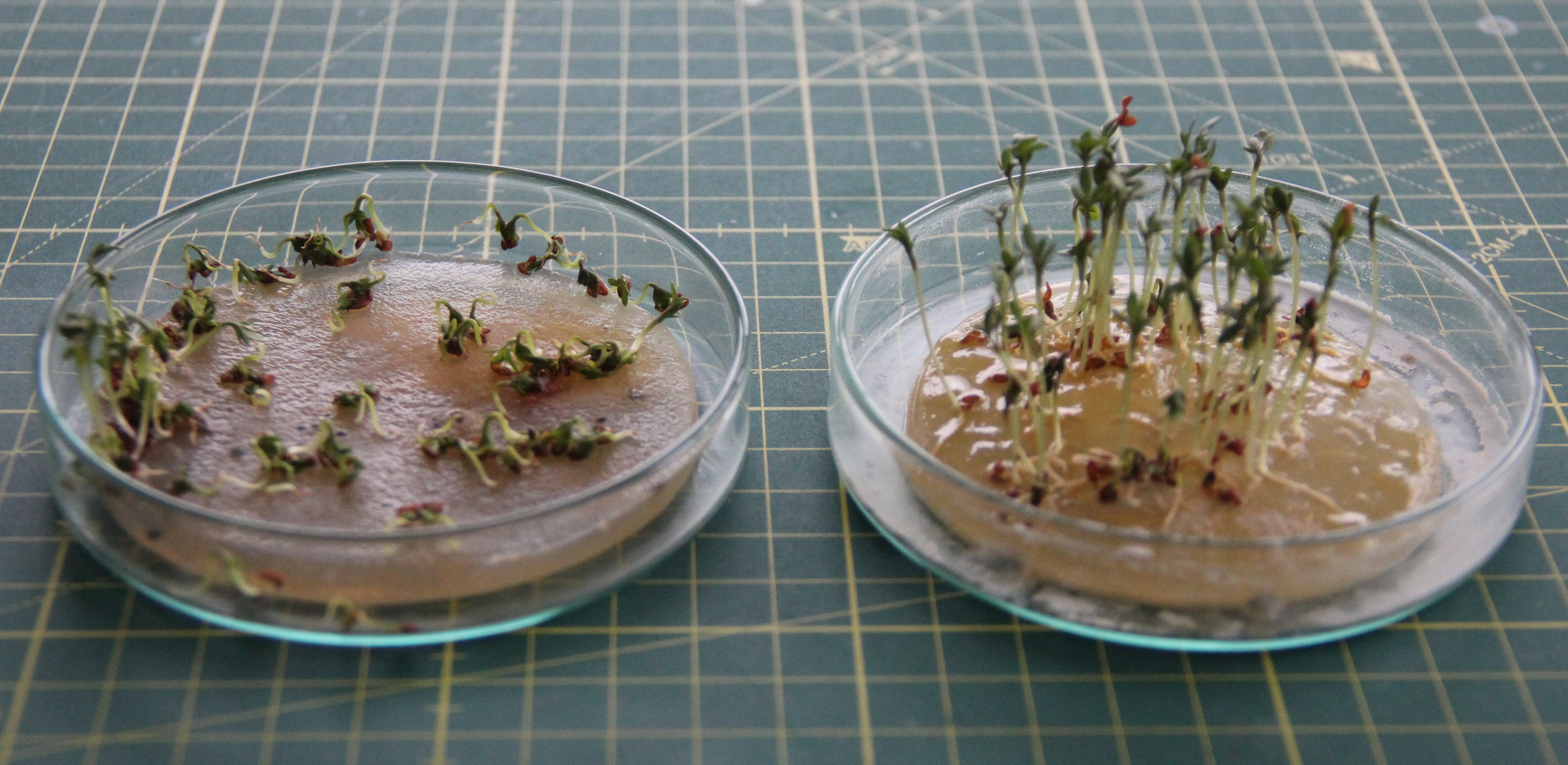
 M. Bindhammer
M. Bindhammer
Discussions
Become a Hackaday.io Member
Create an account to leave a comment. Already have an account? Log In.